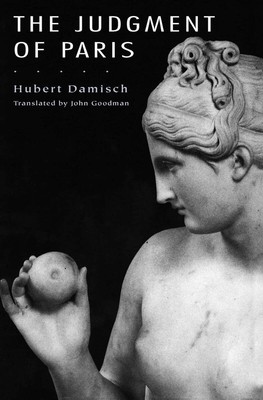
- We will send in 10–14 business days.
- Author: Hubert Damisch
- Publisher: University of Chicago Press
- ISBN-10: 0226135128
- ISBN-13: 9780226135120
- Format: 15.3 x 22.9 x 2.2 cm, softcover
- Language: English
- SAVE -10% with code: EXTRA
Reviews
Description
Drawing on Freudian theories of sexuality and Kant's conception of the beautiful, French art historian Hubert Damisch considers artists as diverse as Raphael, Picasso, Watteau, and Manet to demonstrate that beauty has always been connected to ideas of sexual difference and pleasure. Damisch's tale begins with the judgment of Paris, in which Paris awards Venus the golden apple and thus forever links beauty with desire. The casting of this decision as a mistake--in which desire is rewarded over wisdom and strength--is then linked to theories of the unconscious and psychological drives. In his quest for an exposition of the beautiful in its relation to visual pleasure, Damisch employs what he terms "analytic iconology," following the revisions and repetitions of the motif of the judgment through art history, philosophy, aesthetics, and psychoanalysis. This translation brings an important figure of the French art historical tradition to Anglo-American audiences.
EXTRA 10 % discount with code: EXTRA
The promotion ends in 11d.22:34:26
The discount code is valid when purchasing from 10 €. Discounts do not stack.
- Author: Hubert Damisch
- Publisher: University of Chicago Press
- ISBN-10: 0226135128
- ISBN-13: 9780226135120
- Format: 15.3 x 22.9 x 2.2 cm, softcover
- Language: English English
Drawing on Freudian theories of sexuality and Kant's conception of the beautiful, French art historian Hubert Damisch considers artists as diverse as Raphael, Picasso, Watteau, and Manet to demonstrate that beauty has always been connected to ideas of sexual difference and pleasure. Damisch's tale begins with the judgment of Paris, in which Paris awards Venus the golden apple and thus forever links beauty with desire. The casting of this decision as a mistake--in which desire is rewarded over wisdom and strength--is then linked to theories of the unconscious and psychological drives. In his quest for an exposition of the beautiful in its relation to visual pleasure, Damisch employs what he terms "analytic iconology," following the revisions and repetitions of the motif of the judgment through art history, philosophy, aesthetics, and psychoanalysis. This translation brings an important figure of the French art historical tradition to Anglo-American audiences.


Reviews